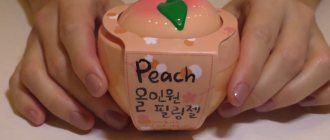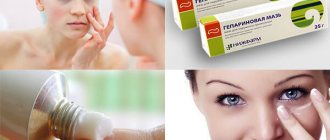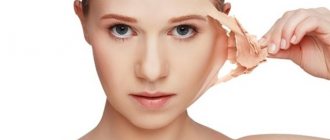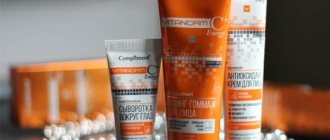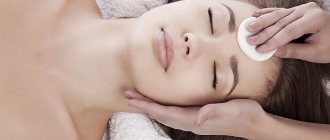PROFESSIONAL FACIAL PEELING WITH ACIDS from BELITA
Skin is a living organ. Skin cell renewal is a dynamic and continuous process. Over time, the speed and efficiency of skin regeneration decreases. One day we discover that our skin no longer looks soft, fresh and elastic. We are beginning to realize that our age and lifestyle have a merciless effect on the condition of our skin. Discoloration, sagging, open pores and dullness are early signs of the physiological process of aging.
But why apply an aggressive substance to the surface of the skin?
Chemical solutions are used to provide a controlled aggressive effect on the upper layers of the epidermis. The acid peel procedure is quite flexible and can be adjusted depending on the characteristics of the formula. In other words, depending on the level of acidity and controllability of the effects of the acids used or their combinations on the skin. Skin aging triggers many different processes, some of which have already been mentioned above. Consequently, delays in the cell renewal process and deterioration in skin quality lead to the fact that the upper layer of the epidermis, the so-called stratum corneum, thickens due to the accumulation of old keratinocytes, corneocytes (hornocytes). Under this layer of skin, which gradually thickens, the process of thickening the epidermis occurs.
Any peeling procedure has two general goals:
• Peeling is aimed at exfoliating
dead skin cells, thereby removing all imperfections that occur in various layers of the epidermis: spots, violations of the keratin layer of the skin, hyperpigmentation, etc.
The deeper the acids penetrate the skin, the more problems are affected and thus removed. • Peeling and the various characteristics of the acids used stimulate the process of
cell renewal and, therefore, the process of renewal of the epidermis. New, renewed, fresh, glowing and smooth skin blooms day by day.
The result: hydration, elasticity, shine, which are characteristic of young skin.
Mature skin needs to quickly and effectively replenish what has been damaged and lost over time. This is necessary to maintain skin tone and elasticity and maintain a clear oval face. • Unfortunately, the upper stratum corneum becomes thicker, making it difficult for the active ingredients to properly penetrate this layer of the epidermis, where they are most needed. Regular superficial peeling with acids prevents the thickening of the stratum corneum, which promotes optimized movement of substances within the epidermis and allows the replenishment of structural elements that will help restore the elasticity of the face and/or body contours. • In addition to improving the cell renewal process associated with the use of acid, peeling also triggers other beneficial processes, such as smoothing wrinkles, tightening pores, and replenishing and strengthening tissue due to the long-lasting effect of collagen synthesis. Peeling is a universal weapon in the fight against skin imperfections. Peeling is part of preparing the skin for facial care using professional cosmetics at home. It helps solve various aesthetic problems thanks to optimized and deep penetration of ingredients. Moreover, regular peeling procedures will allow you to keep your skin in better condition. Acid peels are the perfect solution to provide a natural, daily exfoliation process for your skin.
The effectiveness of the acid peeling procedure depends on the following concepts:
1. Concentration
The acid concentration in the drug from 2% to 40% affects the lower layers of the stratum corneum and leads to exfoliation.
Concentrations of 40% and higher have an intense stimulating property and are indicated during a course of anti-aging procedures. 2. The pH of the drug
Ph for superficial chemical peels varies from 4.8 to 2. The lower the Ph, the higher the acid content in the solution, therefore the result of the procedure is more pronounced
3. Exposure time
For chemical superficial peels, there are two indicators for neutralization that you should focus on cosmetologists.
The objective factor is pink erythema on the surface of the skin and the subjective factor is a burning sensation in the client. During the first procedures, the skin adapts to the action of acids, so the exposure time is minimal. In the future, the exposure time can be gradually increased. 4. Type of peeling
Depending on the task at hand: rejuvenation, hydration, elimination of inflammatory elements, etc., the cosmetologist can choose a drug with certain leading properties and get the best result. For example, milk peeling helps moisturize and whiten the skin, while almond peeling clearly exhibits antibacterial properties, regulates the functioning of the sebaceous glands, removes oily shine, and accelerates the regeneration of post-acne spots.
Protocol for the procedure Chemical peeling takes place in 4 stages:
1. Pre-peel preparation 2. Peeling procedure: application of acid 3. Neutralization of acids 4. Post-peel care
Pre-peeling preparation.
MAKEUP REMOVER. SCRUBBING:
Gentle cleansing cream is the first step in the peeling procedure. Gently removes makeup and impurities without disturbing the natural balance of the skin. They soften and moisturize the skin, preparing it for the action of the following preparations of the Multi-Acid Superficial Peeling program, and is an effective means for pre-peel preparation and for adapting the skin to the action of acids. It also serves as a good preventative against the formation of inflammatory elements on the skin of the face. CREAM-EXFOLIANT is a facial scrub with soft granules and fruit acids (glycolic, lactic, citric) that continues preparation for the acid peeling procedure. A modern complex preparation for microdermabrasion. Effectively combines the action of mechanical scrubbing granules and a complex of three fruit acids that polish, renew and smooth the skin. Provides excellent results for subsequent peeling.
ACID APPLICATION:
The BELITA-VITEX line of superficial chemical peels contains 6 preparations of surface chemical peels to solve a wide range of aesthetic problems: age-related changes, hyperpigmentation, problem skin, oily shine, dry skin.
How to use at home
Features of the use of the product directly depend on its purpose. In other words, peelings for professional and home use may differ slightly in the procedure protocol.
Protocol for amateur peelings:
- Skin make-up removal, removal of cosmetic residues, dust, dirt.
- Apply the product to damp skin.
- Massaging the skin with your fingertips.
- Leave the product on for 3-5 minutes
- Rinsing off product residue.
- Applying a moisturizing mask, serum or cream (the procedure helps to avoid overdrying of the epidermis).
Advice. For better cleaning, it is permissible to use a brush or soft sponge.
Protocol for the professional peeling procedure:
- Skin make-up removal, removal of cosmetic residues, dust, dirt.
- Apply acid-retaining products to the skin using your fingers or a synthetic brush. The skin should be dry.
- The required amount of holding time is indicated in the instructions for the drug (usually no more than 5 minutes).
- Applying a special composition to the face that neutralizes the effects of acid.
- Apply a mask, cream or serum according to your skin type.
Belarusian peeling Belita is an excellent option for those who want to make their skin clean and smooth, while saving money. The line of exfoliants of this brand is extremely diverse and allows you to choose a product to suit your taste - from professional to softer, homemade ones.
Almond peeling 30% pH2.
Mandelic acid has a large molecule and is characterized by anti-inflammatory and antibacterial properties. It also exhibits moisturizing, antioxidant and rejuvenating effects. Almond peeling is one of the preferred peelings among cosmetologists, as it is easy to perform, has a short post-peeling period, is well tolerated by patients with sensitive skin, is the drug of choice for those intolerant to glycolic acid, and is the drug of choice for acne. This peeling is also recommended for correcting the first signs of aging. and NEW:
Stages of the procedure
Glycolic peeling is a simple effective procedure; the client can learn what it is, how the session is carried out, from a specialist. Skin tests are required to rule out allergies, then the skin is cleansed with lotion.
You should cleanse the skin, then apply glycolic acid. No pain medications are required, although clients do experience a slight burning sensation. When applying several layers, the patient will experience stronger pain, but the procedure will give a greater effect.
Neutralization of the acid is an important step. The surface of the skin must be wiped with a towel soaked in cool water or a napkin. The duration of the process is 10-20 minutes. After the end of the session, a restorative cream is applied.
Tonic gel Neutralizer (ph 8.5-9.0)
Designed to neutralize the effects of acids. Urea is added to the drug formula as a neutralizing agent. The gel form of the drug is convenient and economical to use. The drug not only neutralizes the effects of acids, but also has a caring aspect, since urea is part of the natural moisturizing factor (NUF) of the skin. A mild tonic gel is designed to stop the action of fruit acids and prepare the skin for the completion of the peeling procedure. Soothes, protects and strengthens the skin.
Post-peeling care: cosmetics after facial peeling with acids
The final result of the course of procedures largely depends on how the client takes care of his skin in the period between chemical peeling procedures. You should strictly adhere to the cosmetologist’s recommendations and choose home care products that are specially created for this period and are fully capable of performing the following tasks: reducing/eliminating subjective discomfort, preventing possible complications, anti-inflammatory therapy, antioxidant protection, stimulating recovery processes. Post-peeling protective face cream SPF 50, restoring cream-mask after dermabrasion and chemical peeling effectively restore the barrier function of the skin and pH, actively moisturize, nourish, saturate the skin with vitamins and minerals, and provide a protective effect against adverse external environmental factors. A soft triple action cream: completes the care procedure, soothes the skin and effectively protects it from sun damage. Absorbs quickly and does not leave a greasy sheen. Prevents photoaging, enhances the protective properties of the skin, softens and nourishes it.
PEELING COURSE: how often should you peel your face with acids?
To achieve lasting results, a course of superficial chemical peels is necessary. As a rule, it is recommended to carry out such procedures 2 times a year in the autumn-winter period. The recommended step between procedures is 7-10-14 days and depends on the condition of the skin, age, regeneration process for each client and the type of chemical peeling. However, almond peeling is an all-season peeling, which allows its use regardless of the time of year. To prevent the occurrence of hyperpigmentation, it is extremely important to use products with an SPF factor year-round, during the period of post-peeling care. With proper management of the client throughout the course and following simple rules in the period between procedures, a high aesthetic result and achievement of the set goals from the procedure are guaranteed!
Degree of exposure and acid concentration
There are 3 types of glycolic peels:
- surface;
- average;
- deep.
A cosmetologist will tell you what glycolic peeling is and what consequences it causes.
Each type contains a certain concentration: 5-10%, 15-30%, 35-50% and 70% glycolic acid. The stronger the solution, the deeper the penetration of the acid into the layers of the skin and the more effective the treatment.
Contraindications
Even before visiting a cosmetologist, you need to familiarize yourself with the list of prohibitions on the procedure:
- Herpes.
- The presence of open wounds in the treated area.
- Pregnancy period.
- Having allergies to drugs.
If you do not have such restrictions, then you can safely sign up for a specialist’s office, where you will be presented with your new attractive look. It is worth carrying out peeling in the fall or winter, since during the rest of the year a large amount of sunlight can damage your renewed epidermal cells and cause unpleasant consequences.
There are no age restrictions for the patient, especially for the superficial version.
Before and after glycolic peeling
Precautionary measures
Chemical exposure has a number of limitations; before carrying out it is important to familiarize yourself with the main contraindications:
- pregnancy, lactation;
- spring-summer period;
- presence of warts, papillomas;
- herpes;
- Fitzpatrick skin types 4 and 5 - dark skin, dark hair and eyes;
- damage to the integrity of the integument;
- inflammatory processes;
- individual sensitivity to the components of the composition;
- rosacea;
- chronic diseases;
- fresh tan;
- carrying out chemotherapy, taking retinoids, hormonal drugs.
Subject to the rules of preparation, recovery and protocol, side effects are minimized. Redness, swelling, and peeling quickly disappear, allowing you to enjoy the result of renewed skin. But in some cases complications may occur:
- 1st and 2nd degree burns are a consequence of violation of the rules for exfoliation, incorrectly selected acid concentration;
- pigmentation is a consequence of violation of the rules of the recovery period or a sign of skin photosensitivity;
- irritation, itching, pimples, red spots appear when the protocol is not followed or contraindications are not identified; in case of swelling and difficulty breathing, you should immediately consult a doctor;
- increased dryness can be caused by the fact that the acid has simply burned the protective barrier; thinning of the skin requires long-term use of moisturizing, regenerating, nourishing cosmetics.
Possible complications
Upon completion of the procedure, you may notice a red complexion that will last from two hours to several days. Those with sensitive skin will also be susceptible to crusting or swelling. The main thing to remember is that you should never rip them off! Be careful when you want to scratch your face, as improper removal of growths will leave marks in the form of scars. If such symptoms occur, just see your cosmetologist, he will prescribe special moisturizing products.
Remove acne marks from your face
Answers on questions
Where to buy Glycolic peeling from Belita-Vitex?
You can purchase professional cosmetics in specialized stores. Also, sometimes sales are carried out directly in beauty salons. Many girls choose to shop in online stores. Often this allows you to significantly save money, but you need to be as careful as possible so as not to purchase a fake or low-quality peeling.
Which peeling is best for dry skin?
The best option would be to choose Lactopiling – Lactic acid peeling. With its help, you can not only carry out high-quality cleaning of the dermis, but also nourish it and moisturize it as much as possible.
Is it possible to perform Glycolic peeling for rosacea?
If rosacea is present, the cleansing procedure with glycolic acid is contraindicated.
TESTING THE PRODUCT AT HOME
When purchasing Belita, it is worth studying the product label - it indicates the skin type suitable for a particular exfoliant.
Before using the product, familiarize yourself with contraindications and test for skin sensitivity. To do this, a day before the procedure, apply a little of the composition to the inner elbow surface with a cotton pad, leave for up to 2 minutes, and rinse with water.
If the slight redness that appears subsequently disappears, you can proceed with the event. If an allergic reaction is manifested by itching, swelling, prolonged or severe redness, you will have to discard the product.
As a preparation, an exfoliant with a low (2–10%) amount of fruit acids is also used a week before the procedure. They are applied with a gradual increase in time and the reaction of the epidermis is observed.
Suitable for checking the skin for allergies and glycolic peeling 35%. It is diluted with a little water or applied with a cotton pad moistened with 2-3 drops of the product.
